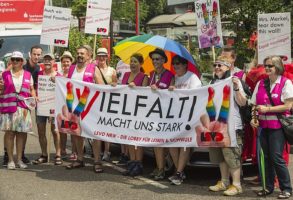Published February 13, 2013
The Catholic Difference
When did modern Catholicism begin? The conventional wisdom says, “at Vatican II.” A sophisticated version of the conventional wisdom says, “with the mid-twentieth-century Catholic reform movements that shaped Vatican II.” In Evangelical Catholicism: Deep Reform in the 21st-Century Church, I suggest that even the sophisticated form of the conventional wisdom doesn’t open the lens widely enough.
The gestation of the Church being born today—the Church of the New Evangelization—began in 1878, when Pope Leo XIII was elected. Leo quietly interred Pope Pius IX’s rejectionist strategy toward all aspects of modernity and began to explore the possibility of a new Catholic engagement with modern intellectual, cultural and political life. Leo XIII only planted the seeds. But the seeds he sowed—in Catholic biblical studies, in the renewal of Catholic philosophy and theology studies, in creating the social doctrine of the Church, and opening the Church to modern historical studies—eventually bore fruit.
It wasn’t easy. There was considerable resistance to the Leonine reform and its development. But the mid-twentieth-century renaissance of Catholic theology that produced giants like Joseph Ratzinger and that shaped the deliberations of Vatican II was made possible in part by Leo XIII. If John XXIII was the father of Vatican II and Pius XII its grandfather, then Leo XIII (in whose pontificate John XXIII was born) was a kind of great-grandfather of the most important Catholic event since the sixteenth-century Council of Trent.
Which brings us to another point: From the vantage point of the twenty-first century, and the call of both John Paul II and Benedict XVI for the Church to embrace the New Evangelization, we can see more clearly that what Leo XIII set in motion was the end of Counter-Reformation Catholicism—the Catholicism defined by the Council of Trent; the Catholicism that anyone over fifty today grew up in.
Counter-Reformation Catholicism had many accomplishments. It energized great missionary endeavors, notably in the newly discovered Western Hemisphere. It successfully resisted the bloody-minded French Revolution and the radical secularism that struck nineteenth-century Europe like a tsunami, driving half the German episcopate to prison during Bismarck’s Kulturkampf and destroying the Papal States in the Italian Risorgimento (the latter, in hindsight, a blessing in disguise). It was the Catholicism that began the evangelization of sub-Saharan Africa, and the Catholicism that refused to truckle to communism, the greatest persecutor of the Church in history. It set the institutional framework for the reform movements that were the foundation of Vatican II.
But its time has now passed. As the New Testament Church gave way to the Church of the Fathers, and that Church gave way to medieval Catholicism, which in turn gave way to Counter-Reformation Catholicism, so the Church shaped by Trent is now giving way to the Church of the third millennium—Evangelical Catholicism. And just in time.
Counter-Reformation Catholicism “worked,” as recently as the 1950s in America, because the ambient public culture helped transmit the faith, especially in intensely Catholic environments like Boston, New York, Philadelphia, Baltimore, Chicago, Detroit, St. Louis, Milwaukee and so forth. But those days are long gone. The twenty-first-century cultural air is toxic, anti-biblical, Christophobic. It teaches the soul-withering notion that to do things “my way” is the summit of human aspiration and the very definition of maturity. And it regards those who hold firm to biblical religion and its moral teachings as idiots at best, irrational bigots at worst.
In this atmosphere, which is the air we breathe, Counter-Reformation Catholicism doesn’t work. What is needed—to live the faith, to pass on the faith, and to convert the world—is a robustly Evangelical Catholicism: a Catholicism of radical conversion to friendship with Jesus Christ, which is understood to confer a missionary vocation on everyone. And so John Paul II concluded the Great Jubilee of 2000 by challenging the entire Church to leave the shallow waters of institutional maintenance (Counter-Reformation Catholicism) and, like the disciples on the Sea of Galilee, to put out “into the deep” and convert the world.
That’s Evangelical Catholicism.
George Weigel is Distinguished Senior Fellow of the Ethics and Public Policy Center in Washington, D.C. and holds EPPC’s William E. Simon Chair in Catholic Studies. Mr. Weigel’s syndicated Catholic press column, “The Catholic Difference,” is the most widely circulated Catholic press column in the country, reaching a combined readership of some two million persons each week.











